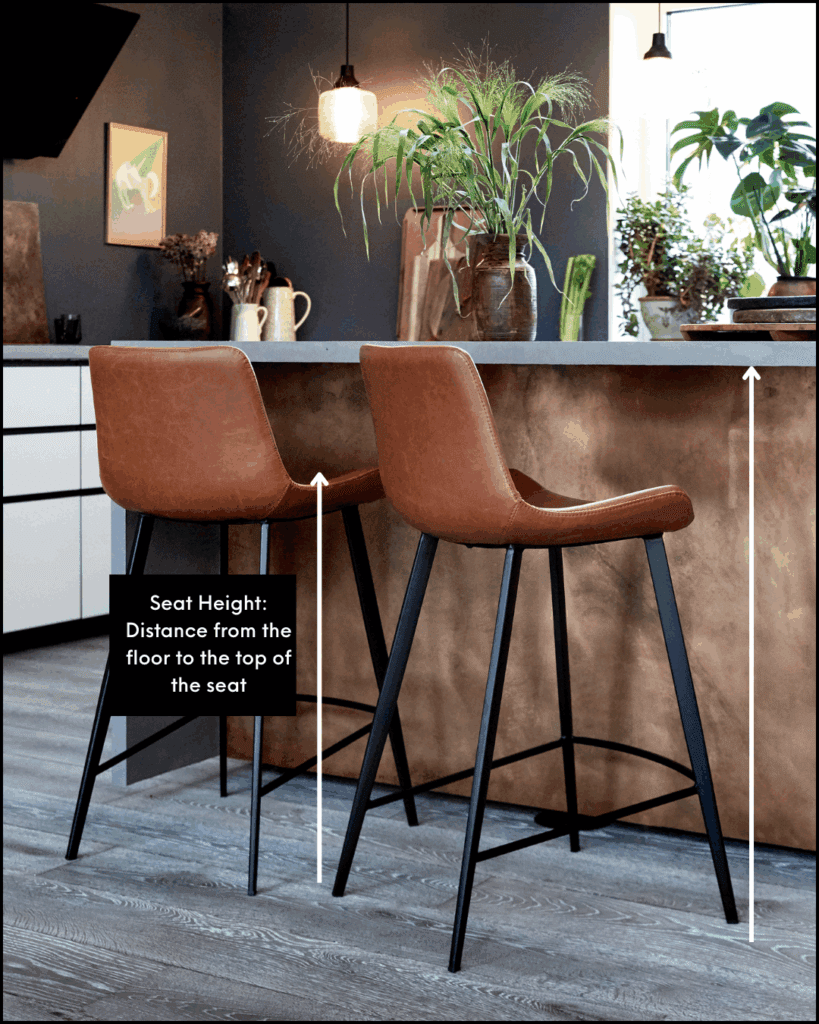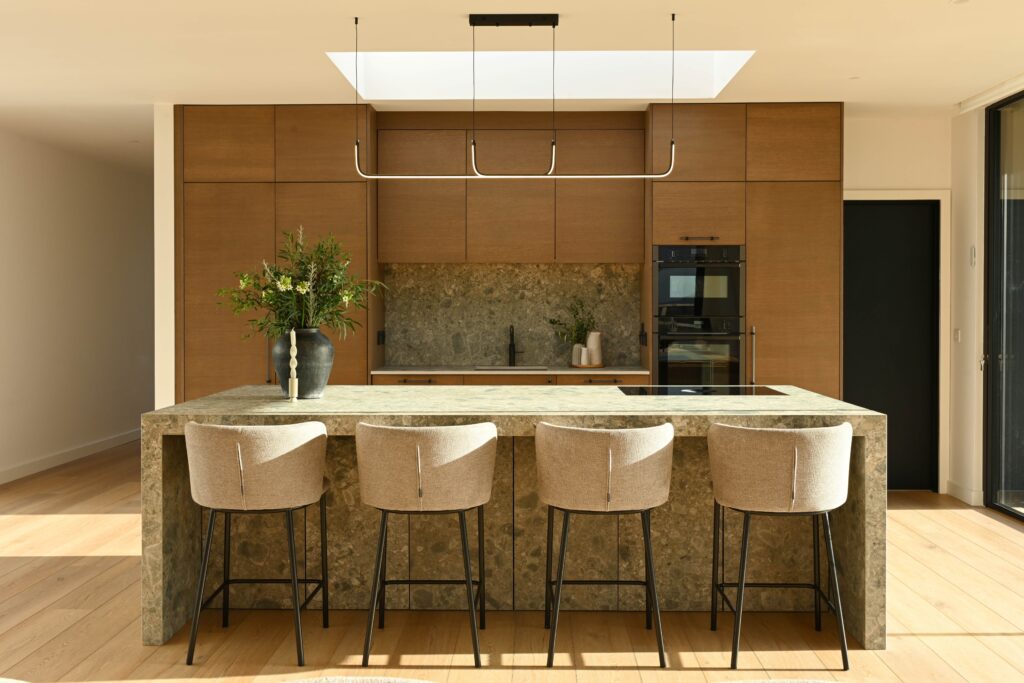Bar stools vs Counter Stools – If you’ve ever shopped for kitchen stools, you’ve probably come across the terms bar stools and counter stools—and maybe even used them interchangeably. While they often look very similar, there’s one crucial difference: height. Choosing the wrong stool height can make your seating experience awkward or uncomfortable. Imagine banging your knees on the underside of the counter, or having to reach up awkwardly to enjoy a meal. The right fit is all about proportions—and we’re here to help you get it just right.
The main distinction between bar stools and counter stools is the height of the seat:
Bar Stools Seat Height: 72-80cm Ideal for bar tops: 100 – 105 cm. Counter Stools Seat Height: 59-71cm Ideal for counter tops: around 90cm high This gives you about 25–30 cm of legroom, which is the sweet spot for comfort.
ste.

To determine which type of stool you need, here’s a quick guide: 1. Measure from the floor to the underside of your bar or counter. 2. Subtract 25–30 cm to get your ideal stool seat height. For example: If your counter is 90 cm high, and the underside measures 86 cm, subtracting 25–30 cm gives you a target seat height of 56–61 cm. That falls into counter stool territory.
Ready king, this professional-grade oven will transform yourkitchen experience.

Once you know whether you need a bar or counter stool, you can explore styles that suit your space and lifestyle.
For small kitchens or compact breakfast bars:
Choose stools with a slimmer profile—think backless, lightweight designs that tuck away easily. For long sits or entertaining:
Consider stools with a backrest and an upholstered seat for added comfort.
Still not sure which stool is right for your home? We’re here to help.
Reach out to us at Dunvara Design, and we’ll guide you through the process—so you get the right height, right style, and the right feel for your kitchen space.
Subscribe to our newsletter for design insights and updates, or follow our blog, Dunvara Edit, for exclusive content and inspiration.
